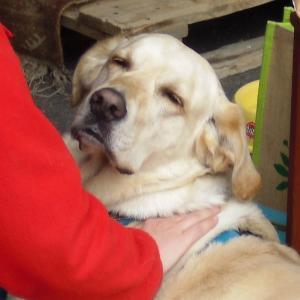Heute im Studio
war es ziemlich chaotisch: Trotz aller Absprachen gab es zeitliche Konfusionen. Der Studio PC war launisch, das Aufzeichnungsprogramm wollte nicht so, wie ich gerne wollte und das Thema war sperrig.
„Wenn Hunde sterben, weil Menschen versagen!“
In unserem Bemühen, auszudrücken, wie groß unser Entsetzen über die Tötung eines gesunden Hundes ist, und dennoch niemanden zu beschuldigen oder gar anzugreifen, haben wir erst ein bisschen um den heißen Brei herum geredet. Was dann schlussendlich dabei herausgekommen ist, halte ich für durchaus gelungen – und ich hoffe, Sie auch.
Unser Anliegen ist keinesfalls, jemanden zu verurteilen, sondern auch Alternativen hinzuweisen und Menschen zu sensibilisieren, in deren Umfeld sich solche Mensch-Hund-Tragödien abspielen.
Hilfe erfragen – und zulassen! Das war eine der zentralen Aussagen des Gesprächs, das ich mit Frau Mag. Barbara Antesberger und Frau Mag. Elisabeth Berger, beide bekennende Hundehalterinnen, heute im Studio der Radiofabrik führen durfte.
Es gibt Alternativen
zur Tötung eines Hundes und die Abgabe an einen anderen Platz darf kein Tabu sein. Im Gegenteil, oft öffnet sich durch diese Entscheidung die Tür ins Paradies.
Tötung dagegen ist Gewalt!
Gewalt in höchster Konsequenz! Und Gewalt kann keine Lösung sein.
Das Schlusswort von Elisabeth Berger ist ein ganz wunderbares Zitat des Nobelpreisträgers Albert Schweitzer:
„Ich bin Leben, das leben will, inmitten von Leben, das leben will.“
Sendung anhören:
Live auf der Radiofabrik 107,5 oder per Livestream immer am 2. Mittwoch im Monat um 12:08 Uhr und am 2. Donnerstag im Monat um 19:06 Uhr. Nachhören ebenfalls über die Radiofabrik oder über den Hunderunde Blog.
Feedback und Kontakt: Karin Immler, www.knowwau.com





